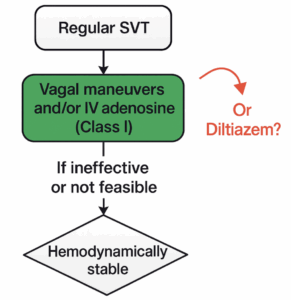Article Summary by Casey Patrick, @cpatrick_89
Who, What, When, Where and How?
-
Who? – 1205 non-trauma OHCA patients with a endotracheal intubation attempt, defined as “the introduction of a laryngoscope past the teeth and concluded when the laryngoscope was removed from the mouth, regardless of whether or not an endotracheal tube was inserted.”
-
What? – Retrospective, observational, cohort (cohort = OHCA/intubation)
-
When? – Jan 2015 – June 2019
-
Where? – Seattle Fire
-
How? – Primary outcome = neuro intact survival (CPC1/2)
-
Excluded No attempt, BLS only, intubated after ROSC, DNR, other services
The Results

-
Age = 60’s/68% male/33% witnessed/61% received bystander CPR/ 21% shockable rhythm
-
ROSC 44%/Hospital admission 38%/Survival to d/c 11%
-
First attempt success 65%/2nd 86%
-
Overall rate of supraglottic use – 2.8%/0.7% after 2 attempts/11.2% after 3 attempts/28.4% after 4+ attempts
-
Primary outcome = CPC 1/2
-
There was a negative correlation between # of ET attempts and neurologically intact outcome: 11% CPC 1/2 with ONE intubation attempt/4% with TWO/3% with THREE and 2% with FOUR+ (see Figure)
-
These differences held for shockable vs. non-shockable rhythms
-
Multivariable stats modeling adjusted for: age/sex/witness/bystander/times/initial rhythm
-
The Questions
-
What about SGA’s? – This isn’t a rehash of PART/AIRWAYS-2. Overall rate of SGA use was very low.
-
Mean time to airway = 5min in this study
-
Yes, this is retrospective but… Very granular (especially in OHCA world)
-
Incorporated monitor data PLUS audio (1200 patients!!)
What Should We Do Now?
-
No, this doesn’t translate directly to agencies using “primary SGA” in OHCA
-
BUT…More evidence airway delays = worsened patient-oriented outcome
-
Should there be a more rapid transition to SGA use after failed primary intubation attempt?
-
-
BOTTOM LINE – Concentrate on the interventions that we KNOW matter: Early recognition and bystander CPR, access to early defibrillation, minimize pauses, proper compression rate and depth.
Edited & Accompanying Figure by EMS MEd Editor Maia Dorsett, MD PhD FAEMS (@maiadorsett)



